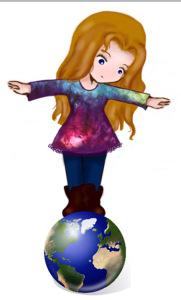
Welcome to a new feature on my blog! Every so often I will be selecting a country of the world (with a little help from you, my lovely readers) and trying to immerse myself in their literature. Hopefully I will learn a lot along the way and my findings will make for interesting reading. I hope to read at least 4 or 5 books from each country with some quick thoughts on each book whilst also posting a history of that country’s literature. Many thanks and hugs also to Luna’s Little Library for the beautiful Bibliobeth munchkin above. So without further ado, I’d like to introduce my first country -
ICELAND.
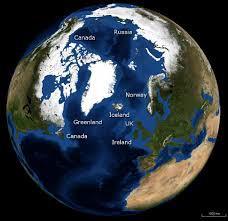
A Brief Introduction To Icelandic Literature
- The earliest recorded texts in Iceland were the sagas, thought to have been written around the 13th Century.
- These often stated historic facts about the country i.e. the migration of settlers to Iceland, the division of land between families, the establishment of law and the structure of society and the voyages of Vikings to unexplored lands.
- Sagas are a source of national pride for many Icelanders and many represent Iceland’s early days of independence.
- There were also mythological stories and poetry known as eddas, and some legendary sagas informed readers about the notable saints.
- Conflicts based on personal interests and honor led to a civil war in the 13th century where Iceland was placed under the control of Norway and later Denmark for six centuries.
- At the beginning of the 19th century, there was a literature revival, dominated by romanticism and the poets Thorarensen and Hallgrimsson (who was also the first writer of the Icelandic short story).
- In 1850 the first Icelandic novel was published by Jon Thoroddson. Piltur og stúlka (Lad and Lass) is a love story that illustrates his talents for concise satirical sketches of people and places.
- In 1955, one of Iceland’s most celebrated novelists, Halldór Laxness won the Nobel Prize for Literature. He is famous for novels such as Independent People and Iceland’s Bell.
- In recent years, the growth of crime novels being published has been exponential. Writers such as Arnaldur Indriðason, famous for his crime series based in Reykjavik lead the pack but it appears to be one of the most popular genres in the country, the sales figures double that of any of their Nordic neighbours.
- Iceland has more writers, more books published and more books read in the entire world. One in ten Icelanders will publish a book in their lifetime.
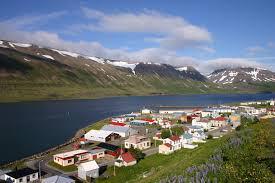
What did I read?:
- Jar City – Arnaldur Indriðason
- Names For The Sea: Strangers In Iceland – Sarah Moss
- Independent People – Halldór Laxness
- Iceland, Defrosted – Edward Hancox
- Icelandic Folk And Fairytales – May Hallmundsson, Hallberg Hallmundsson and Kjartan Gudjonsson (Illustrator)
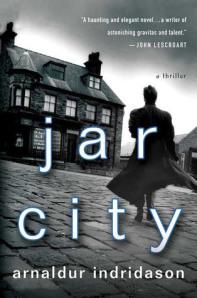
What’s it all about?:
A man is found murdered in his Reykjavik flat. There are no obvious clues apart from a cryptic note left on the body and a photograph of a young girl’s grave.
Delving into the dead man’s life Detective Erlendur discovers that forty years ago he was accused of an appalling crime, but never convicted. Had his past come back to haunt him?
As Erlendur struggles to build a relationship with his unhappy daughter, his investigation takes him to Iceland’s Genetic Research Centre, where he uncovers disturbing secrets that are even darker than the murder of an old man.
Jar City is the first book in the series starring Detective Erlendur available in English.
Quick thoughts:
- I liked how the author gave us murder from an Icelandic viewpoint i.e. “Icelandic murders aren’t complicated. Icelandic judges are notoriously lenient. Icelandic murderers generally don’t leave anything behind but a mess.”
- Erlendurs issues with his daughter who is a drug addict made compelling reading.
- The pace of the novel is fairly slow compared to what I am used to from other crime thrillers.
- Personally, I was slightly disappointed by this book. I’m not sure what I was expecting but it seemed to fall a little flat and I had difficulties warming to the main character.
Star rating (out of 5):

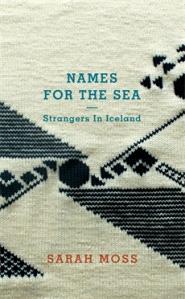
What’s it all about?:
Novelist Sarah Moss had a childhood dream of moving to Iceland, sustained by a wild summer there when she was nineteen. In 2009, she saw an advertisement for a job at the University of Iceland and applied on a whim, despite having two young children and a comfortable life in an English cathedral city. The resulting adventure was shaped by Iceland’s economic collapse, which halved the value of her salary, by the eruption of Eyjafjallajökull and by a collection of new friends, including a poet who saw the only bombs fall on Iceland in 1943, a woman who speaks to elves and a chef who guided Sarah’s family around the intricacies of Icelandic cuisine.
Sarah was drawn to the strangeness of Icelandic landscape, and explored hillsides of boiling mud, volcanic craters and fissures, and the unsurfaced roads that link remote farms and fishing villages in the far north. She walked the coast path every night after her children were in bed, watching the northern lights and the comings and goings of migratory birds. As the weeks and months went by, the children settled in local schools and Sarah got to know her students and colleagues, she and her family learned new ways to live.
Quick thoughts:
- As a non-fiction book for anyone interested in Iceland, this is a must read. I connected with the author immediately as after visiting Iceland earlier this year, I could easily live there!
- I loved reading the authors views and comments on Icelandic driving. It’s scary, it’s dangerous, the public transport isn’t terrific and if you are anywhere outside of Reykjavik, you can feel completely isolated.
- I found the Icelandic shame over second-hand goods really interesting. Allegedly, you would be hard pressed to find a second-hand clothes shop or market and some Icelanders are truly horrified that you would have to resort to such a thing.
- Icelandic cuisine has to be seen to be believed. We’re talking roasted sheep’s heads, not much fresh fruit or vegetables and the wonderful sounding skyr, a form of strained yoghurt which by the author’s descriptions sounds utterly blissful.
Star rating (out of 5):

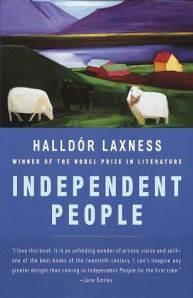
What’s it all about?:
In an epic set in Iceland in the early twentieth century, Gudbjartur Jonsson buys his own croft after eighteen years of service to the local bailiff, and brings his wife and his small flock of sheep there to build a new, independent life for himself.
Quick thoughts:
- It’s easy to see why Halldór Laxness won a Nobel Prize for Literature, the writing is exquisite and gives a very authentic picture of what Iceland was like for farmers in the early twentieth century.
- The pace is VERY slow and some readers may feel that not much is really happening. However, I found the beauty of the smaller details shone through.
- Bjartur is an extremely unlikeable character at points through the book but I found him fascinating and very readable. He was a man with dreams who was determined to see them through.
- We find Icelandic folklore and poetry interspersed throughout the text, remnant of the old sagas and eddas passed down from generation to generation.
Star rating (out of 5):


What’s it all about?:
This is the story of one Englishman’s obsession with a half-frozen, roughly duck-shaped island in the cold North Atlantic. ‘Iceland, Defrosted’ is less about wars over cod, flight-halting volcanoes and globe-shattering financiers, and more about relaxing in natural hot pots, sharing barbeques in howling winter storms and eating waffles and rhubarb jam while watching playful Arctic foxes. Oh, and desperately, desperately searching for the elusive Northern Lights (which might not exist anyway). Loosely based on a circuitous route around Iceland, it concentrates on places, people and experiences, soundtracked by the coolest Icelandic musicians, all wrapped up in the warmest lopapeysa and jump-started with the strongest coffee. It is a story that’s almost a love letter, born from a constant yearning for this special place and fueled by a growing understanding and a desire to uncover the real Iceland.
Quick thoughts:
- Combined with some very witty British humor and sarcasm, this book revolves around one of Edward Hancox’s main passions, Iceland that will leave you feeling just as passionate about the country, even if you’ve never visited!
- I found the author’s search for those damned Northern Lights hilarious. I was lucky enough to catch a smaller show (blink and you’ll miss it), but what I saw was beautiful.
- The sense that in some parts of the country you can feel quite isolated was conveyed nicely as the author attempts to see a bit more of the “real” Iceland.
- It would have been lovely (as with Sarah Moss’ book) to see some photographs of the places, things etc they were talking about although the descriptions were excellent.
Star rating (out of 5):

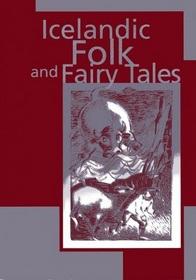
Nowhere does a nation bare its soul to the same extent as in its popular lore, its folktales,” say translators May and Hallberg Hallmundsson in their introduction to this selection of Icelandic folk and fairy tales. Spanning the rich folk tradition from ghosts and eleves to sorcerers, saints and outlaws, the stories reflect everyday life in Iceland through the centuries, throwing a unique light on the Icelandic character in humorous as well as serious circumstances. The Hallmundssons have selected and translated all the tales in this volume from the classic collection of 19th-century folklorist Jon Arnason, who devoted years of his life to recording stories preserved by oral tradition since the early days of Iceland’s history.
Quick thoughts:
- I’m a lover of any form of folklore or fairytale and I really enjoyed learning all about Iceland’s own myths and legends, some of them proving to be very surprising!
- The cultural and historical information that came through from some of the stories was fascinating and it’s mind-blowing to realize that these tales have been passed down from generation to generation.
- The first story, Genesis Of The Elves brought the Bible, specifically Adam and Eve into play. When Eve did not present her unwashed children before God as she was ashamed of them, they became invisible to human eyes as God decided what was hidden from him should also be hidden from others.
- One of my favorite stories in the collection was The Parish Pauper who cannot go anywhere without her chamber pot. A stranger offers to help her, carrying her pot but disappears into a chasm in the earth causing her to shriek: “Damn him, he took my potty!”
Star rating (out of 5):

I’ve really enjoyed my first foray into Icelandic fiction, and am definitely inspired to read more, even to give Arnaldur Indriðason another chance, perhaps? I feel like I’ve learned a lot about both the country’s literature and about its cultures and history. But now it’s over to you, dear readers. I’d like you to help me decide where I should travel next? Hope you’ve enjoyed this post and I’m looking forward to seeing the results of the poll, open for one week.
<a href="http://polldaddy.com/poll/8477296">Take Our Poll</a>

